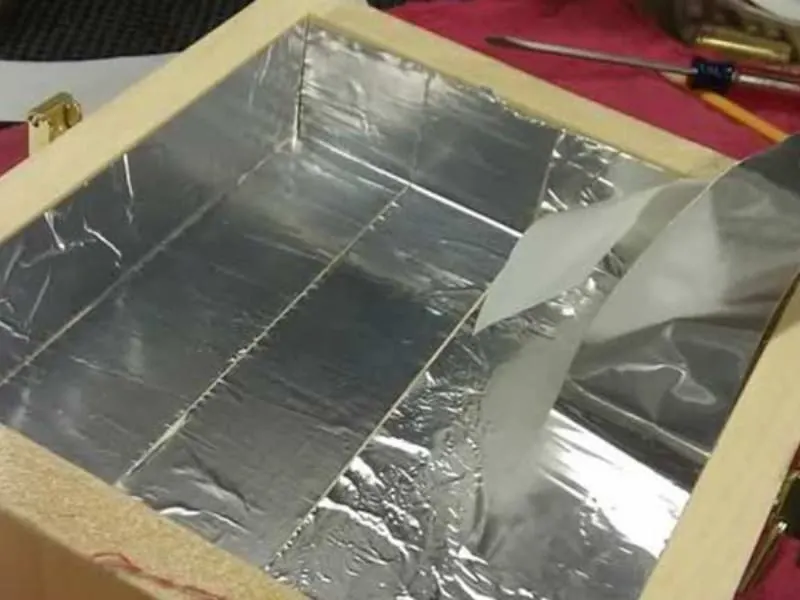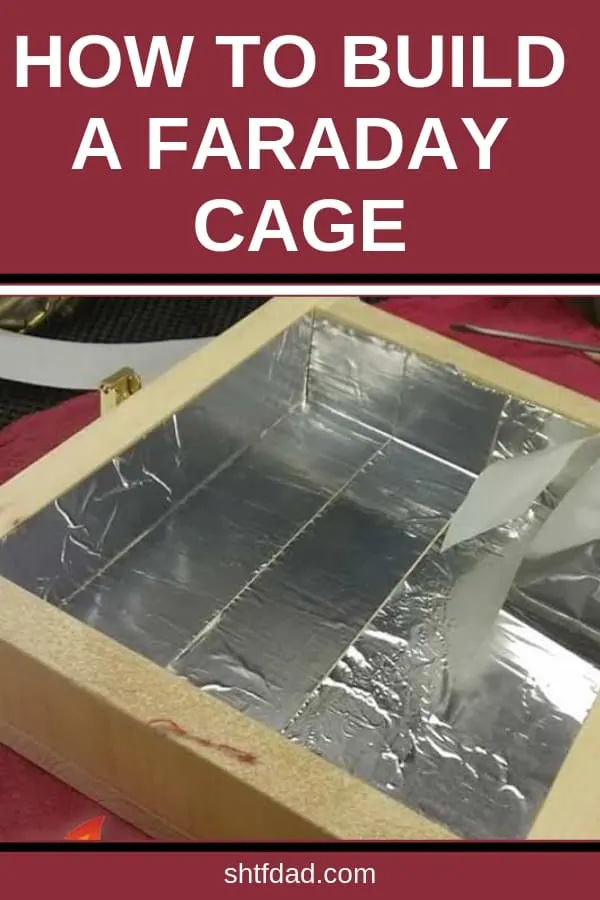SHTFDad may collect a share of sales or other compensation from the links on this page.
I was watching some documentaries the other day and one of the SHTF scenarios discussed is an EMP wave.
I won’t get into the specifics of an EMP, but what you need to know is that it will fry up every single piece of unprotected digital equipment when it happens. An EMP wave means all communications will be down.
It is a real total SHTF scenario whether you are single or the head of the family, so I decided to talk about how you can minimize the aftermath effects of an EMP by learning how to build a Faraday cage.
Learn How To Build A Faraday Cage
What is a Faraday cage?

A Faraday Cage is not really a cage. It is a capsule or an enclosed space surrounded by a layer of a good electrical conductor.
Technically speaking, the whole cage itself can be made of conductive material, but for an extra layer of safety, a non-conductive inner layer usually encloses the space inside the Faraday Cage.
If you’re not sure how to make one, you can get a Faraday cage kit on Amazon.
- Build your own Medium Faraday Cage, Assembly...
- 5 layer MIL-SPEC material features 2 layers of...
- >60db EMI attenuation (FULLY SPECCED Premium...
Why do you need a Faraday cage?
Designed to protect whatever is inside it from high levels of non-static and static electricity, a Faraday Cage is more important than you think.
In the event of an EMP, the forms of communication we have now will cease to work. No more phones, Internet, Facebook, Twitter, text and the like. Can you imagine how chaotic things will be?
A Faraday Cage will protect your GPS devices and radios when that SHTF scenario happens.
If you have one, you can even save my posts as web pages in your extra laptop, store the laptop in the cage and browse on it when an EMP SHTF event happens!
How does a Faraday cage work?
A Faraday Cage blocks surges of electricity outside the cage and prevents it from affecting anything inside the cage.
The electrons in the cage’s conductive outside layer do this by aligning themselves and forming some sort of a path for the electrical surge, thereby acting as a shield.
For the cage to work properly, the ‘skin’ of conductive material should be fully encapsulating the space inside the cage.
Building Your Own Faraday Cage
- 200 SQUARE FOOT ALUMINUM ROLL: This package...
- ALUMINUM FOIL: Backed by over 70 years of quality...
- LOCKS IN FLAVOR: Use this versatile kitchen foil...
To build your own small and simple Faraday Cage, all you need is electrically conductive material like aluminum foil and a box. But why aluminum foil?
Well, aluminum foil is very conducive as well as very pliable and malleable. It is cheap and you can use it to transform any container into your very own Faraday Cage.
A Faraday Cage made from a box wrapped in aluminum foil would be great for storing a radio or phone for an EMP event.
You can also build a larger one using a large bucket to store bigger items like laptops, hard drives, and the like.
Tutorial on How to Build Your Own Faraday Cage
In my research about making Faraday Cages, I’ve come across these cool videos.
One is about how to make a small one and the other for a big one. The larger one is for storing bigger electronic items.
Both videos are showing how easy and how cheap it is to make your own Faraday Cage in case an EMP SHTF event happens.
Judging from all the hype EMP occurrences has been getting in scientific circles, it wouldn’t hurt to be well-prepared for an EMP SHTF.
If you are a real SHTF enthusiast, you might also want to check out how to build large Faraday Cages. These are called as Shield Rooms. Better yet, you can make your own EMP-proof vehicle shown below:
Faraday Cages Everywhere!
Since any container made of metal can be classified as a Faraday Cage, you may already have one sitting around in your home.
Do you have an ammunition box?
- LOCK IT UP -- The only NEW 50 Cal Ammo box with...
- AIR and WATER TIGHT – Each can is individually...
- DESICCANT PACK & FOAM - We provide 1 desiccant...
How about unused microwave ovens?
Hey, you can also use some metal garbage bins and cleaned out metal paint containers if you happened to have one.
I’m planning to teach my eldest how to make a Faraday Cage as a science project. How about you? Have you made one before?
For more SHTF and Prepping articles for your home and vehicle, like us on Facebook to get updates!

Resources:



